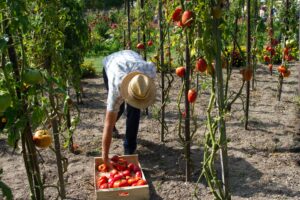What are Externalities?
13 Oct. 2023
The FOODCoST project’s main goal is to internalise externalities related to food production and consumption. However, to kickstart this process, it is important to understand how we can actually define the concept of externalities.

All of our decisions and actions lead to consequences for ourselves and generally also for others. This is also true for decisions related to the production of food in a certain way or in a certain location, or decisions to consume a certain food product.
When making decisions about food production and consumption, most people would take certain consequences into account. For example, the fact that the consumption of food provides nutrients to the body, or that it provides a sense of belonging when shared with others, or a feeling of happiness. Similarly, the production of food also provides a livelihood and sense of belonging and possibly other value to farmers and their families. Considering these factors, the consumption of food products requires consumers to give up some of its perceived value by paying for it, while it requires farmers to invest time and money into its production.
In economics, a distinction is made between private and social costs and benefits: the costs and benefits that are internal to the individual or firm responsible for production are classified as private costs and benefits, while the costs and benefits incurred by others and not directly by the individuals and firms, are called social. Externalities arise whenever the actions of one party make another party either worse or better off, while the first party neither bears the costs, nor receives the benefits of doing so (Jonathan Gruber, [2018]).
How externalities relate to the cost of food
Many of the consequences of food consumption and production are external. In fact, an estimation from the UNFSS (2021) revealed that the true costs of worldwide food production were estimated to be three times higher than the actually paid market value (Hendriks et al., 2023).
A great deal of the negative external costs of food are related to health costs and environmental costs, but there may also be positive external costs from food production and consumption, such as the maintenance of landscapes and positive contributions to biodiversity from certain nature-inclusive agricultural practices. Without an accurate knowledge of these true costs and benefits, it is impossible for consumers, producers and policy makers to make informed decisions and take these externalities into account when deciding to produce in a certain way or buy certain food products.
A clearer picture of the true cost of food
Although the concept of external costs is not new – it was first elaborated in the early 20th century by Alfred Marshall and Arthur Pigou – recent improvements in environmental impact analysis and the rising urgency of countering the negative effects of food production and consumption, together with the increasing availability of data, have led to a multitude of newly developed True Cost Accounting methodologies.
One of the central challenges is the diversity of available methods and the underlying assumptions and data. Some methods and data sources are more developed than others. For example, many Life Cycle Assessment (LCA) databases include quite detailed data about CO2 emissions, while data about soil degradation, biodiversity loss, and social and health effects are often less available and developed.
This variety of methods and assumptions also leads to differences in (local) solutions including, such as taxes applied. Additionally, comparing the degree to which sectors, regions, and agricultural products internalise their associated externalities becomes challenging due to variations in the accuracy levels of the calculation of those externalities.
FOODCoST aims to contribute to the harmonisation of these methodologies and forms of data collection regarding the external costs of food, in order to provide researchers, producers and consumers with a clearer picture of the true costs of food.
References
Hendriks, S., de Groot Ruiz, A., Acosta, M. H., Baumers, H., Galgani, P., Mason-D’Croz, D., Godde, C., Waha, K., Kanidou, D., von Braun, J., Benitez, M., Blanke, J., Caron, P., Fanzo, J., Greb, F., Haddad, L., Herforth, A., Jordaan, D., Masters, W., . . . Watkins, M. (2023). The True Cost of Food: A Preliminary Assessment. In J. von Braun, K. Afsana, L. O. Fresco, & M. H. A. Hassan (Eds.), Science and Innovations for Food Systems Transformation (pp. 581-601). Springer International Publishing. https://doi.org/10.1007/978-3-031-15703-5_32
